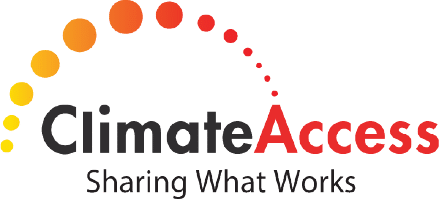As part of our efforts to address the scientific uncertainty smokescreen (reason number five of the Seven Reasons Why the Public Is Not Engaged on Climate), we asked a handful of Climate Access members the following question: “From your work, what is the main tip you would give others regarding communicating to the public about the science of climate change?”
Here is what they had to say. We encourage other Climate Access members to weigh in with your comments and recommendations.

Focusing on the science is of little impact for most people. Trying to incentivize people to change behavior doesn’t work. What works is a deep transformational approach. It’s tough, it takes too long, but it’s the only thing that really works. We need a new way of being, not a bunch of new things to do.

I think the most important tip about communicating the science of climate change is that literacy does matter. Contrary to recent stories like this that covered Kahan et al’s article in Nature Climate Change, knowledge about climate change does increase understanding of the problem and concern about the risk.
The Six Americas study on Knowledge about Global Warming shows that in fact literacy does matter in terms of concern for risk; while most Americans do get a D or F on the basics of climate and energy, on a graded curve, 97 percent of the Alarmed get a passing grade vs. 56% of the Dismissive and 19 percent of the Disengaged.

I like to communicate about climate change holistically, and this includes key nuggets of physical science. Most people are not scientists, and this means their training in the scientific process or ability to digest highly technical findings or language is limited. Rather than expecting the science to speak for itself in whatever context and language was derived by technical experts, I think it’s really important to recognize the perspective non-technical audiences are bringing to the table. How can we as scientists and communicators relate our studies to topics and examples that non-technical audiences are already familiar with? What stories link climate science with familiar, appreciated pieces of their lives and interests? And static presentations of information just don’t work. We have to provide people with ways to interact and engage with climate science, and while for some this may mean actually hiking to the toe of a glacier and collecting data of its retreat, for others it may simply mean having a dialogue with people who are also thinking about this topic, or working with visual arts to better convey the message that speaks to different learning styles.
I really like the way Sterman (2011) puts it: “Paradoxically, however, scientists, having deepened their understanding through an interactive, iterative learning process, often turn around and tell the results to… the public through reports and presentations, expecting them to change their beliefs and behaviors, and then express surprise when these groups – excluded from the process, unable to assess the evidence on their own and presented with claims that conflict with deeply held beliefs – resist the message and challenge the authority of experts.” (From: Sterman, J. D. (2011). Communicating climate change risks in a skeptical world. Climatic Change, 108, 811-826. doi: 10.1007/s10584-011-0189-3)

Recognize, and work to characterize and communicate clearly, the uncertainty in projections of changes in climate that matter to your community.
Prepare your stakeholders — boards and commissions, senior management, elected officials, ratepayers or the general public, whoever they are — for that uncertainty. Those who correctly view climate change as inevitable sometimes also expect easy answers as to how to adapt, and their urgency tends to be drawn from the headlines. But there are no easy answers, and the need to adapt is a slow burn. When spending becomes necessary (when “climate justified” rather than “no regrets” actions become necessary), these difficult questions will have price tags associated with them, and you want your messaging groundwork in place.
Assess – then Adapt. There should be no rush to adaptation before assessment has taken place. This can be a semantic issue, and if you want to consider assessment as part of adaptation, that’s fine. But the truth is that for many, likely most, though perhaps not all, vulnerable communities, actual adaptation action (making investments to make you more resilient) is in the future. Understanding the science, evaluating the threat of climate change, and exploring options for responding to that threat all come before “adaptation.” We need to explain this to our communities.
You need to build relationships in the scientific/academic community in order to know what climate change will mean for you, particularly if you’re trying to think long term. Climate science, in my experience, is unlike most other technical, scientific underpinnings to policymaking. The main difference is that it’s just too complicated to understand for the layperson, more so than biology, hydrology, ecology, and many other science/policy disciplines. You need translators – and those translators should be very helpful in making your assessment and adaptation case to your stakeholders.

Seek first to understand, then to be understood
Listen
Facilitate exchange
Share stories
Experience, reflect, learn something new, integrate & apply
We are supporting interactive spaces for sharing and learning among practitioners and researchers. Some creative NOAA folks recently did a story on a row crop climate working group that we have been hosting. The participant network crosses state boundaries linking farmers, extension specialists and researchers from Alabama, Florida and Georgia. See here for the nicely done NOAA feature.
Our partnerships are evolving as are our Aha moments. We continue to learn a great deal from this ongoing process. Our next get together with the working group is on-farm in the sweltering heat of August at Myron’s place (one of the farmers featured in that NOAA story). Stay tuned!

It would be, simply: Understand values.
For more, see: valuesandframes.org

It is more relevant and encourages hope and action to talk about “a range of possibilities” rather than “uncertainty” when communicating to the public about climate science (results of climate models, e.g.).
Background: PRBO creates climate models to help managers plan for the future. There are many factors that will affect what the future looks like and they are continually changing. The climate science modeling that PRBO does takes as many known factors as possible into account and gives a range of possible future scenarios of what ecosystems will look like. It is most likely that no one scenario will be absolutely correct, so the best plan is to incorporate as many future scenarios as possible into future planning to try and cover all the bases. This is basically common sense when you think about it. A good analogy is how people invest their money with 401K’s. Most of the time, it is better to diversify your portfolio rather than put all your eggs in one basket because that is the safest bet for future gains. It would be foolish to invest in or expect that we know exactly what the future will hold. It is smart to invest in multiple likely future scenarios based on what we know now then adjust as we gain more information. This is true for economics-based investments in the stock market as well science-based investments in the environment. Once the deflating, intimidating idea of uncertainty is transformed into the hopeful knowledge that there is a range of possibilities then we can begin communicating about action and empower people to make choices that will yield the best possible ecological and economical future for wildlife and people.

My research is examining best practice for strategic climate change communication from the novel perspective of the science communication practitioner. Through interviews with professionals employed in government, nongovernment and industry settings, this study will elucidate the factors that inform their approaches to the design and implementation of climate change communication initiatives. Based on preliminary findings, the organization in which the practitioner was employed was perceived to be an important factor affecting their ability to be strategic. As such, I can share the following recommendation:
Organizations engaged with the task of communicating about the issue of climate change would benefit from an enhanced appreciation for the complexity of effective communication and a commitment to providing their communication practitioners with training in, and the consistent application of, theoretically informed strategies.

